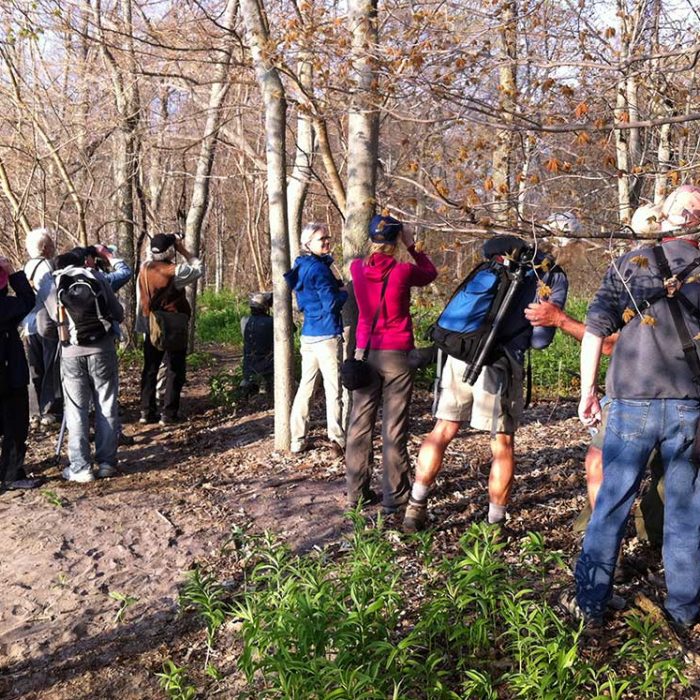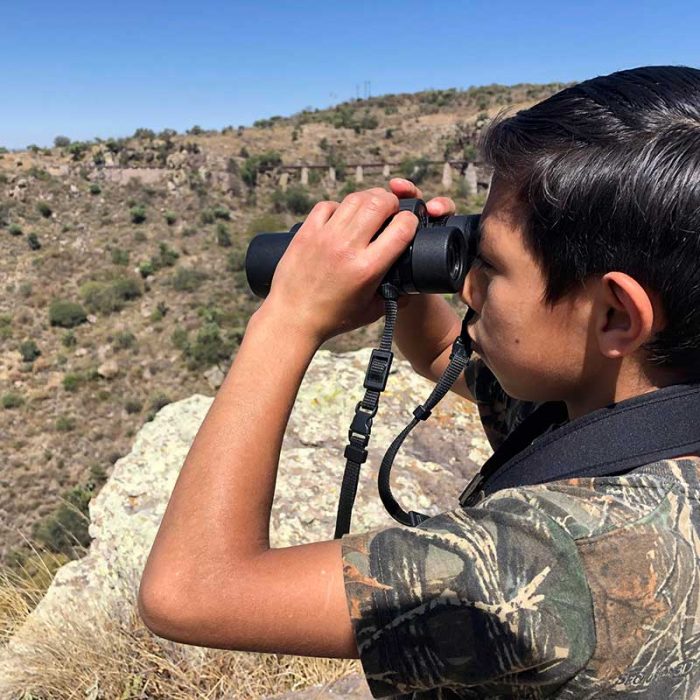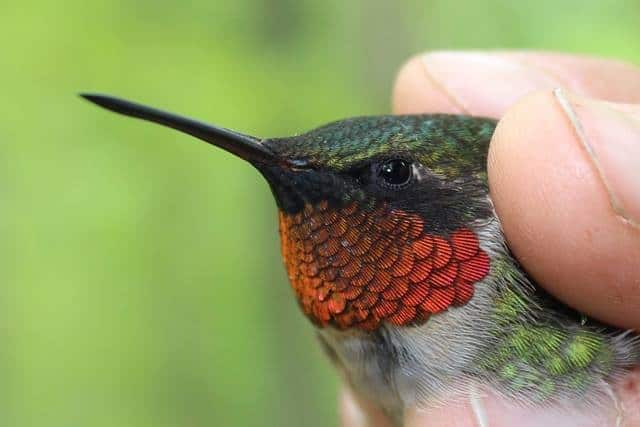As the end of October approaches, and with it the beginning of the end of songbird migration, the number of warbler species observed at Fish Point has declined steadily. Myrtle Warblers are one of the last warblers to leave Ontario in the fall and they have been seen the most consistently out of all the warbler species that remain. Western Palm Warblers are another late-migrating species, but they have most often been seen around the PIBO cottage on Stone Road rather than at Fish Point. The Blackpoll and Bay-breasted Warblers that were so common previously are almost all gone: only two Blackpoll Warblers were seen October 21st.
Amid all these defections, though, a few late-migrating individuals remain. PIBO’s previous migration summary discussed some of the unseasonable sightings that have been recorded this fall, and these continued into the second half of October, where they have stood out more and more as the season winds down. American Redstarts and Black-and-white Warblers continue to be sighted at intervals and, Ontario in the fall and they have been seen the most consistently out of all the warbler species that remain. Western Palm Warblers are another late-migrating species, but they have most often been seen around the PIBO cottage on Stone Road rather than at Fish Point. The Blackpoll and Bay-breasted Warblers that were so common previously are almost all gone: only two Blackpoll Warblers were seen October 21st.
Kinglets have become a mainstay at Fish Point. They come and go in mixed flocks, their high, thin, trilling calls sounding all around the banding station for a few minutes as they pause to feed and then move on. Brown Creepers sometimes travel with them, looking like an ambulating piece of bark as they inch their way up tree trunks. October 28th to 30th was an especially busy time for kinglets – in each case, the bulk of the birds banded that day were captured in just one or two hours as the mist nets scooped up a whole flock of Golden-crowned Kinglets. Swainson’s Thrushes were banded on October 18th and 29th and seen on October 25th, but aside from those occurrences every one of the Catharus thrushes recorded by PIBO in the second half of October has been a Hermit Thrush.
On October 21st, PIBO’s Field Supervisor Sumiko Onishi sighted an unusual sparrow while conducting the daily census. Its bright orange facial markings and large eye stood out, and allowed her to identify it as an Ammodramus species – either Nelson’s Sharp-tailed or Le Conte’s Sparrow. Unfortunately, she did not have a chance to look for the distinctive head stripe that would have distinguished between the two species before it vanished into the dried grasses. She returned in the afternoon to look for the bird again, but it was gone. Aside from this rare sighting, the sparrows that have been seen around Fish Point have been the usual sort: White-throated, Song, and Savannah Sparrows, and Slate-coloured Juncos. A couple of Fox Sparrows put in an appearance around the banding station on October 24th and 25th, and a Field Sparrow was banded on October 26th. One White-throated Sparrow banded on October 23rd (seen in the photo above) was a partial leucistic, a condition that is marked by a partial loss of pigmentation in the skin and feathers, giving this particular sparrow an interesting ‘piebald’ appearance. Fortunately it still retained the yellow lores that are one of the characteristics of White-throated Sparrows, otherwise, its unusual plumage might have made it difficult to identify! The first American Tree Sparrow of the season was sighted on October 30th, the same day that an American Restart was banded – probably the first occasion where these two species have been recorded by PIBO on the same day.
The total number of species observed by PIBO each day has been growing as more waterfowl are seen on census. Fox Pond has been especially popular with the duck species that have begun to appear on migration, and Wood Ducks, Ruddy Ducks, Hooded Mergansers, and even a Bufflehead have all been seen enjoying its calm and protected waters. A group of Horned Grebes were seen out on the lake on October 22nd, which was also when the first Common Loon of the season was spotted flying over the netting area. A group of Gadwall at Fox Pond on October 28th presented an unusual appearance as they transitioned from their breeding to non-breeding plumages, and the first Scaup species and American Widgeon of the fall were observed on October 29th.
During the time period of October 20th to 29th, PIBO’s banding station was enlivened by the recapture of an unusual number of previously banded birds. These were all individuals that had been originally banded by PIBO, most of them just one or two days previously. On October 25th, a Ruby-crowned Kinglet, a Red-breasted Nuthatch, and a Hermit Thrush were recaptured, all of whom had been banded on October 24th. Similarly, on October 26th a Hermit Thrush, and two Golden-crowned Kinglets were recaptured after being banded on October 25th. Several banded Ruby-crowned and Golden-crowned Kinglets were observed around the banding station on both mornings as well. There was no banding on October 27th due to inclement weather, but on October 28th and 29th more kinglets, Red-breasted Nuthatches and one Nashville Warbler were recaptured, all of them from October 24th or later. It is unusual for the migrant birds that PIBO bands to remain in the area: most move on very quickly, and are not recaptured again. Perhaps these birds were being held back by unfavourable weather, or the anticipation of it, as the following few days were overcast with strong winds, turning to rain on October 27th and 28th. Hardly pleasant weather for flying in!
For the most part, PIBO’s bird banding program does not continue past the end of October, as this is generally when few songbirds are seen and heard on Pelee Island. This year however, considering that large numbers of birds are still being banded and some species, like American Tree Sparrow, are only just now turning up, the mist nets will stay open into November. As always, the daily census will continue until November 15th.
* * *
PIBO’s last public owling night will take place this Saturday, November 3rd, from 7 to 9 p.m. at the PIBO cottage on Pelee Island (585 South Shore Road). Unfortunately the past two public owling nights had to be cancelled on both Saturdays and Sundays due to a combination of bad weather and power outages, so – we have our fingers crossed for this weekend! Join us for mulled wine, hot cider, and the chance to see a Northern Saw-whet Owl, Ontario’s smallest owl species. If there is rain, the event will be rescheduled to Sunday, November 4th. Please check PIBO’s Facebook page for updates!
Summary written by Sachi Schott.







